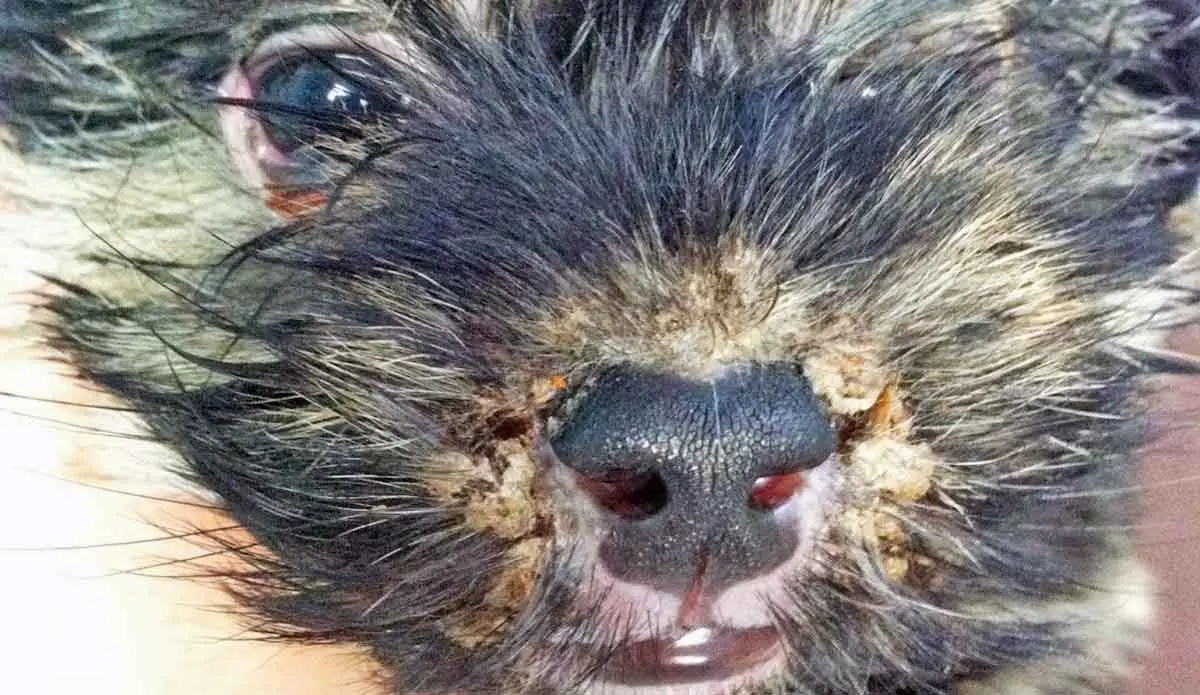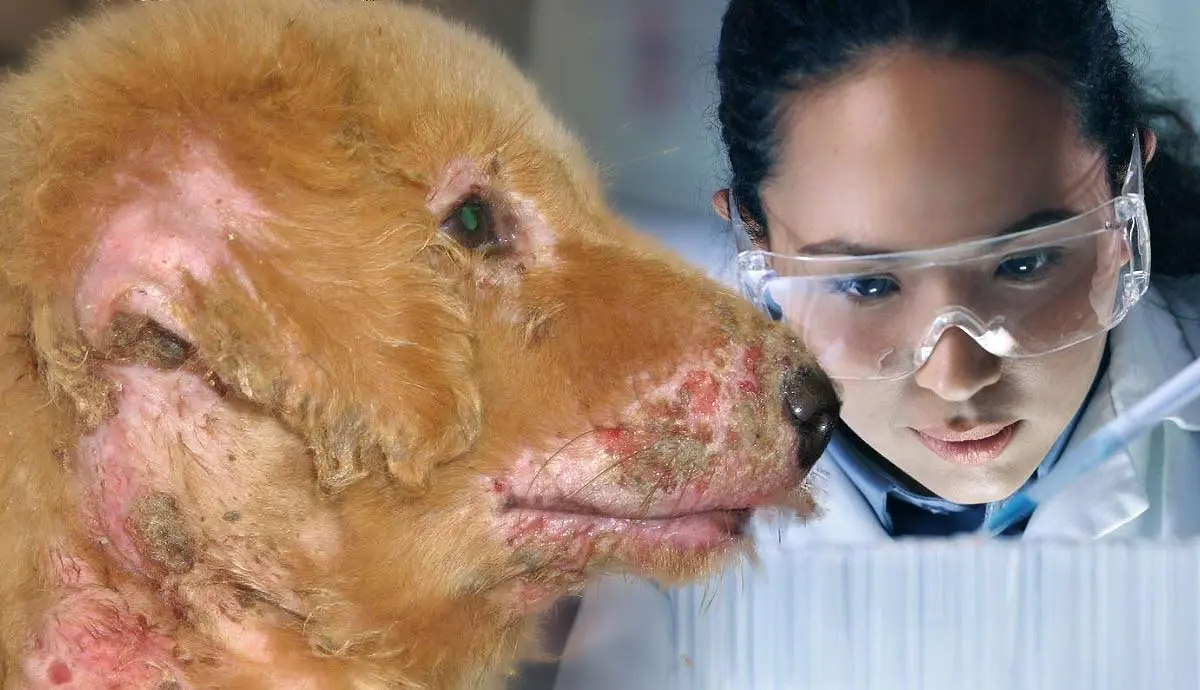Puppy strangles is a skin condition that generally affects young puppies. There have been a few instances of a dog over six months of age being diagnosed with puppy strangles. This inflammatory skin condition is not contagious to other dogs. Also called juvenile cellulitis or sterile granulomatous dermatitis and lymphadenitis, puppy strangles can look painful and terrifying and if left untreated can cause death.
Dogs Most at Risk

While the underlying cause of puppy strangles is unknown, there may be a hereditary factor to the disease. Research suggests that it is immune-mediated which means the puppy’s immune system is essentially attacking its own body, particularly the skin.
The symptoms usually start appearing between three weeks and four months, but sometimes puppies up to six months can develop the disease. There has been no link between puppy vaccinations and juvenile cellulitis.
There is no reliable research that suggests large dogs or small dogs are more likely to develop juvenile cellulitis. Breeds that seem to be more predisposed to developing puppy strangles include:
- Beagle
- Cairn Terrier
- Chesapeake Bay Retriever
- Dachshund
- English Springer Spaniel
- Golden Retriever
- Gordon Setter
- Labrador Retriever
- Lhasa Apso
- Miniature Poodle
- Pointer
- Rhodesian Ridgeback
- Rottweiler
Symptoms of Puppy Strangles

The first symptoms to appear can sometimes be confused with mumps in dogs. The puppy’s jaw and neck will begin swelling. The face, especially the muzzle, lips, and eyelids, will also begin swelling. In some cases, the puppy’s ears swell. The lymph nodes under their jaw will become enlarged.
Hair loss will occur, and red, oozing bumps or lesions will pop up on their skin. Sometimes, the pustules will become crusty lesions and could bleed. Without treatment, the lesions will most likely spread to other parts of the body. As the lesions rupture, they can be very painful for your puppy.
Joint pain and swelling, lethargy, fever, and a lack of appetite are other symptoms of puppy strangles and if you notice any other of these, you need to contact your veterinarian for an immediate assessment and diagnosis. Secondary infections can occur from the lesions, especially around the ears. Even if treatment is sought quickly, scarring and permanent hair loss can happen.
Diagnosing Puppy Strangles

Your veterinarian will begin by ruling out other more common skin conditions. Since puppy strangles is not a very common disease, many veterinarians will not immediately jump to that diagnosis. Skin scrapings will ensure there are no mange, ringworm, or fungal spores that could be causing the symptoms.
After performing routine tests, your veterinarian will begin looking outside the box and testing for less common conditions that cause these symptoms. A skin biopsy may need to be done if the sky cytology report comes back inconclusive.
The skin biopsy will take a skin sample rather than just collecting cells on the skin’s surface. The biopsy can pinpoint the type of inflammation caused by puppy strangles. If a high fever accompanies the other symptoms, a blood and chemistry panel will probably be ordered to make sure there is not a secondary infection brewing.
There have been cases where puppy strangles, when left untreated, have caused death. Prompt diagnosis and treatment can help reduce your puppy’s pain levels and minimize the chance of any scarring or permanent hair loss.
Treatment for Puppy Strangles

Most cases of juvenile cellulitis respond very well to treatments and begin clearing up within just a few weeks. High doses of steroids such as prednisone will probably be prescribed to suppress the immune system and stop the puppy’s body from attacking its skin.
Topical treatments including creams and medicated shampoos may also be prescribed. Hot packs against the areas that are swelling may also ease their discomfort. Ask your veterinarian before using hot packs, they could aggravate some of the symptoms rather than provide relief. General knowledge of dog first aid may be helpful while treating puppy strangles.
Antibiotics may also be prescribed if there is a secondary infection that has been caused by puppy strangles. Remember to follow your vet’s advice and finish all medications prescribed to ensure your puppy returns to their healthy, happy self as quickly as possible.
Ethical breeders will not breed a puppy that has had puppy strangles since there is still so much unknown about the illness. Breeders will get the puppy treated and then place the puppy in a companion home where it will never be bred.
After your puppy has been diagnosed with puppy strangles, the chances of reoccurrence are very slim. Permanent scarring and hair loss could happen if the disease progresses into a severe case, therefore a quick diagnosis and treatment plan is essential for the health and overall comfort of your puppy.





